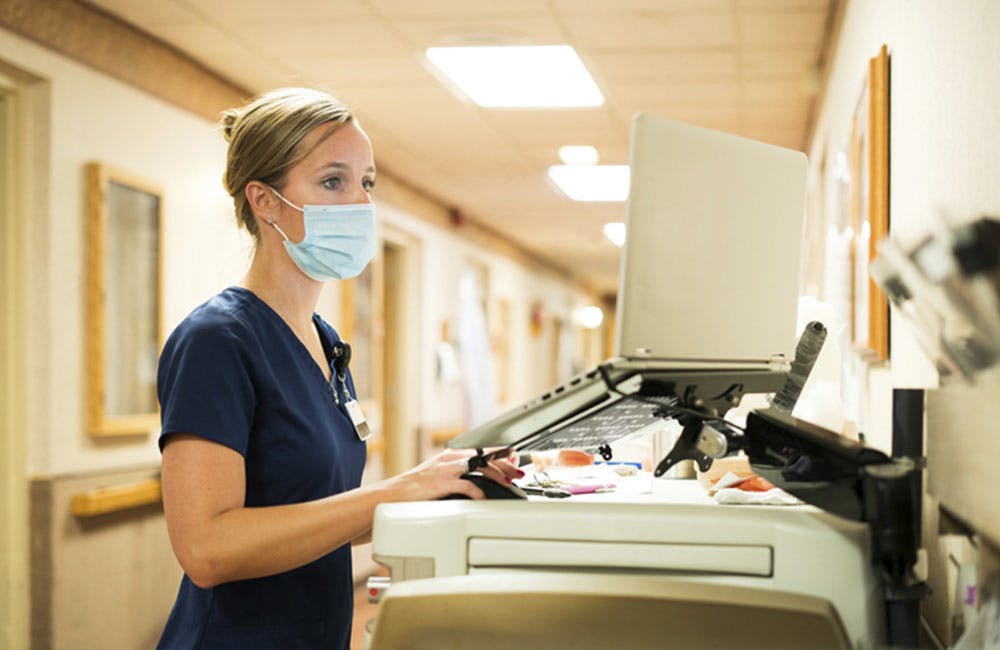Telehealth, Cloud Shine in VA Mid-Year Tech Report
The agency has continued to refine the modernization efforts used to support a remote workforce and the overall COVID-19 response.

The Department of Veterans Affairs has prioritized the expansion of telehealth capacities alongside advances in its overall IT modernization program during the COVID-19 pandemic, a process that has involved new hires within the agency alongside refinement of its cybersecurity policy.
Speaking with reporters regarding a review of the first half of 2021, representatives from VA’s Office of Information Technology discussed the agency’s high-level modernization efforts over the past year.
Dr. Neil Evans, VA’s newly appointed acting CIO and longstanding practicing physician at the Veterans Health Administration, discussed how many of these investments were intended in large part to uphold VA’s medical services during a time of unprecedented strain for American health care as a whole. VA has increasingly oriented its telehealth capacities toward providing support for in-person care as well, with the goal of supporting practitioners already contending with significant demands amidst the pandemic.
“Telehealth has been an important part of our strategy to increase the quality of care that we deliver, often providing added resources on top of in-person care. Our tele-critical care program has been deployed more than 30% of our ICU beds, and that number continues to increase. During the pandemic, we were able to quickly migrate to providing some coverage to 100% of our intensive care unit beds. We have two critical care hubs where critical care specialists in in Minneapolis and Cincinnati are — 24 hours a day, seven days a week — providing monitoring, oversight and support for on-the-ground intensive care teams at our local facilities,” Evans said.
This has occurred alongside a substantial increase in VA’s in-home telehealth services, an expansion in remote care designed to provide patient support even in cases where local clinics are overwhelmed, or patients might want to avoid in-person care due to pandemic concerns. These have also included mental telehealth where veterans are provided mental health and counseling services remotely.
“We’ve had 12.5 million telehealth visits over the course of the pandemic thus far. And from an IT perspective, I would say we’ve supported the infrastructure necessary to scale that telehealth delivery very quickly. We were delivering care into patients homes via our telehealth application VA Video Connect prior to the pandemic. But we were doing about 2,000 visits per typical business day,” said Evans, who previously headed VA’s Office of Connected Care. “Our IT infrastructure was built to support that kind of clinical volume with some overhead to cover particularly busy days. Within a few months of the beginning of the pandemic, we were seeing 25,000, then 30,000, and now higher than 40,000 visits per day.”
Concurrent to this expansion in telehealth services has been a corresponding investment in remote work capacities that have allowed VA’s employees to continue supporting the agency’s modernization efforts and delivery of services from their homes. This has been coupled with the allocation of tablets and other devices to veterans in rural areas who might have otherwise faced challenges reliably accessing VA services due to local technical limitations.
“The Office of Rural Health estimates that between 20 to 24% of veterans don’t have access to sufficient internet at home in rural areas to connect to VA telehealth. We were able to deploy over 100,000 iPads directly to veterans to allow them to have a data-enabled device,” Evans said.
This expansion in both health IT and remote work capacities has been met with ongoing cybersecurity efforts to ensure critical systems remain protected during these transformations. This has included a particular focus on multi-factor authentication and attention to zero trust security principles.
“When it comes to remote employment and teleworking, we already had the multi-factor authentication processes in place. Everybody had their certifications, and with new people coming on board we’re looking at new ways to get them their multi-factor authentication capability,” said VA CISO Paul Cunningham on the call.
VA’s ongoing cloud transformation has also been leveraged toward protecting the agency’s IT systems during these large-scale transitions, both expediting the process while providing a higher level of security.
“Migration to the cloud is also doing some risk mitigation and accelerating our security posture. We’ve moved 133 applications to the cloud, with another 82 in progress. There’s roughly 400 in-house-developed apps still floating around out there, but we’ve reduced our custom development from 57% in 2019 to 45% in 2021,” said VA Deputy Assistant Secretary for DevOps Todd Simpson on the call. “As we continue to move toward that model, we’re getting more security through [software-as-a-service] products, through [commercial off-the-shelf] products and through the cloud.”
This is a carousel with manually rotating slides. Use Next and Previous buttons to navigate or jump to a slide with the slide dots
-

Looking Back at the First Trump Administration's Tech Priorities
In his first term, Donald Trump supported cybersecurity, space policy and artificial intelligence development.
4m read -

Securing the Expanding Attack Surface in Cyberspace
Agencies undergoing digital transformation face a more intricate threat landscape and a wider threat target for adversaries looking to exploit vulnerabilities. This panel dives into strategies agencies are undertaking to safeguard these complex environments, including zero-trust architecture, vigilant monitoring and robust cybersecurity training.
30m watch -

Elevating Cybersecurity in the Intelligence Community
The Intelligence Community is developing strategies to protect data and strengthen resiliency against emerging cyber threats.
30m watch -

AI Revolutionizes Cybersecurity by Doing What Humans Cannot
Leaders from NSA, GAO and industry say that artificial intelligence can augment the cybersecurity workforce, but the work must be auditable and explainable.
4m read








